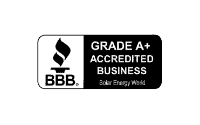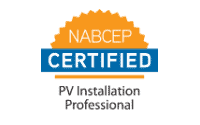By Whit Trovillion
Ten Persistent Myths of Solar Power Debunked
Solar energy has been plagued with several persistent myths which may have discouraged adoption by eligible homeowners. This blog will address some of the more persistent ones and attempt to address some of the fear, uncertainty, and doubt (FUD) surrounding solar energy.
1. The manufacture of solar panels consumes more energy than they generate over their lifetime
The U.S. Department of Energy’s National Renewable Energy Laboratory (NREL) has calculated that the “energy payback” of rooftop solar systems is 1-4 years. Residential photovoltaic (PV) modules can be expected to function for 30 years or more. Therefore, solar panels will generate up to 25 times of the energy that was expended in the manufacturing process.
2. Solar panels contain toxic materials like mercury and heavy metals and cannot be recycled
PV modules contain no heavy metals or mercury. They consist of doped silicon wafers, glass, copper wire, and are bound by a metal frame. There are already dozens of start-ups demonstrating that PV modules can be economically recycled at the end of their service life. PV modules can be recycled and repurposed with greater than 80% efficiency.
3. Solar panels are maintenance intensive
Solar PV panels have no moving parts and will work reliably for several decades. In dusty desert climates, they can be maintained with an occasional spray of water from a hose. In markets served by Solar Energy World, they will receive sufficient rainfall to keep them clean and operating at peak efficiency without any intervention on the part of the homeowner.
4. Solar panel manufacturing is environmentally unfriendly
Solar panels production has scaled up rapidly over the last decade and is poised to grow even faster in the coming years, but the manufacturing process is remarkably clean and not injurious to the environment.
| Energy Source | Lifecycle Tons of CO2 Emitted Per Gigawatt-hour |
| Coal | 820 |
| Oil | 720 |
| Natural Gas | 420 |
| Hydroelectric | 34 |
| Nuclear | 3 |
| Wind | 4 |
| Solar | 5 |
- Solar power is dangerous, even deadly
Solar is by most measures the safest of power sources on the planet
| Energy Source | Excess Deaths per Terawatt-hour |
| Coal | 24.6 |
| Oil | 18.4 |
| Natural Gas | 2.8 |
| Hydroelectric | .02 |
| Nuclear | .07 |
| Wind | .04 |
| Solar | .02 |
- Solar power is a toy only for the rich
The installed price of PV has plummeted over the last decade as manufacturing and installation have scaled up to meet consumer demand, dropping more than 70% in the last decade. Between lower prices, state and local incentives, monthly utility savings, and added home equity, the breakeven point for homeowners going solar averages between three and six years. A reasonably sized PV array offsetting 50-100% of your needs is now squarely within the mean of most homeowners.
7. Going solar will hurt my home’s resale value
There are many respected studies proving that going solar will increase your home’s resale value by potentially tens of thousands of dollars and make it sell more quickly than non-solar equipped comparable in your market.
8. Rooftop solar will damage my roof
Perhaps in the earliest days of rooftop solar, some disreputable companies performed shoddy installations that resulted in leaks, but that is now vanishingly rare. Modern racking systems virtually guarantee no roof leaks and Solar Energy World’s best in class 30/30/30 warrantee on production, materials, and workmanship means we stand by our installations and in the unlikely event of a leak, we will remedy it immediately. We do ask if your roof is relatively new before installation and will happily replace your roof at cost before installing the PV. PV panels typically extend the life of asphalt shingles because they protect the roof from direct exposure.
9. PV adds excessive loads to my roof
PV panels and the racking systems typically add about 3 pounds/square foot to your roof, and it is evenly distributed
10. PV will never pay for itself
In the United States, payback periods vary widely depending on site quality and varying state and local incentives. On average, however, PV will pay for itself in about eight years.





















